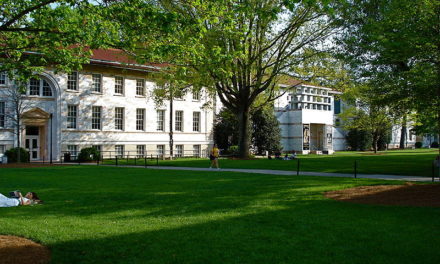
Ayushi Agarwal, Photo Editor
The Emory Student Center (ESC) is the first Emory building to receive the Leadership in Energy and Environmental Design (LEED) Platinum certification, according to Matthew Early, the outgoing vice president of campus services.
Developed by the U.S. Green Building Council (USGBC), the LEED program determines buildings’ environmental footprints by rating their design, construction and operations. A building receives Platinum certification if it scores over 80 of 100 possible credit points.
“LEED Platinum is as difficult [to obtain] as it is for someone to get a perfect score on the SAT,” Early said.
The University submitted a scoresheet to the USGBC with the aid of a third-party firm that evaluated the ESC’s scores in categories such as rainwater management, optimization of energy usage and light pollution reduction.
However, Early emphasized the ESC’s sustainability and reduction in energy use, rather than its LEED Platinum rating, as its greatest achievement.
“LEED Platinum is not your success story. Your real success story is how you reduce energy, how you make it sustainable,” Early said. “Even if you do not get a plaque that says LEED Platinum, your goal is striving to reduce the energy use intensity, [reduce] water use [and] make sure you are sustainable with your waste, that you are promoting sustainable processes.”
Early said that the ESC was one of the first buildings designed after the University’s switch to more sustainable construction and planning processes.
The building uses Emory’s first geothermal system for air conditioning and uses reclaimed water from Emory’s water recycling system, WaterHub, for piping systems. Solar panels on the roof provide heat for the building, which also features occupancy sensors to minimize the usage of electricity from light fixtures.
Early reported that the center boasts one of the lowest energy footprints of all Emory buildings.
The University worked with Atlanta-based design firm Pattern r+d to achieve the ESC’s smaller energy footprint. The firm also considered other factors, such as plug load — the number of electronic devices plugged in at the building — and the building’s orientation, to further minimize its environmental footprint.
Early said that every Emory building designed after the ESC uses the detailed metrics, such as plug load, to minimize environmental impact. The new Health Sciences Research Building (HSRB), which is undergoing preparations for construction, will follow the same sustainable construction model.
“When it’s complete, [the HSRB] will probably be the lowest energy use research building in the nation,” Early said.
Ninad Kulkarni (he/him) (22C) is from Hyderabad, India, majoring in economics and mathematics. You can catch him cheering for Bayern Munich and making poor attempts at playing sports.





